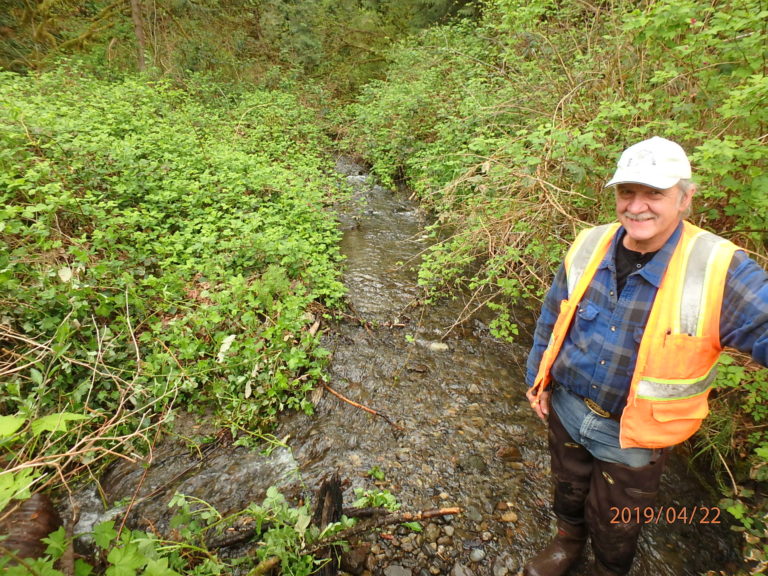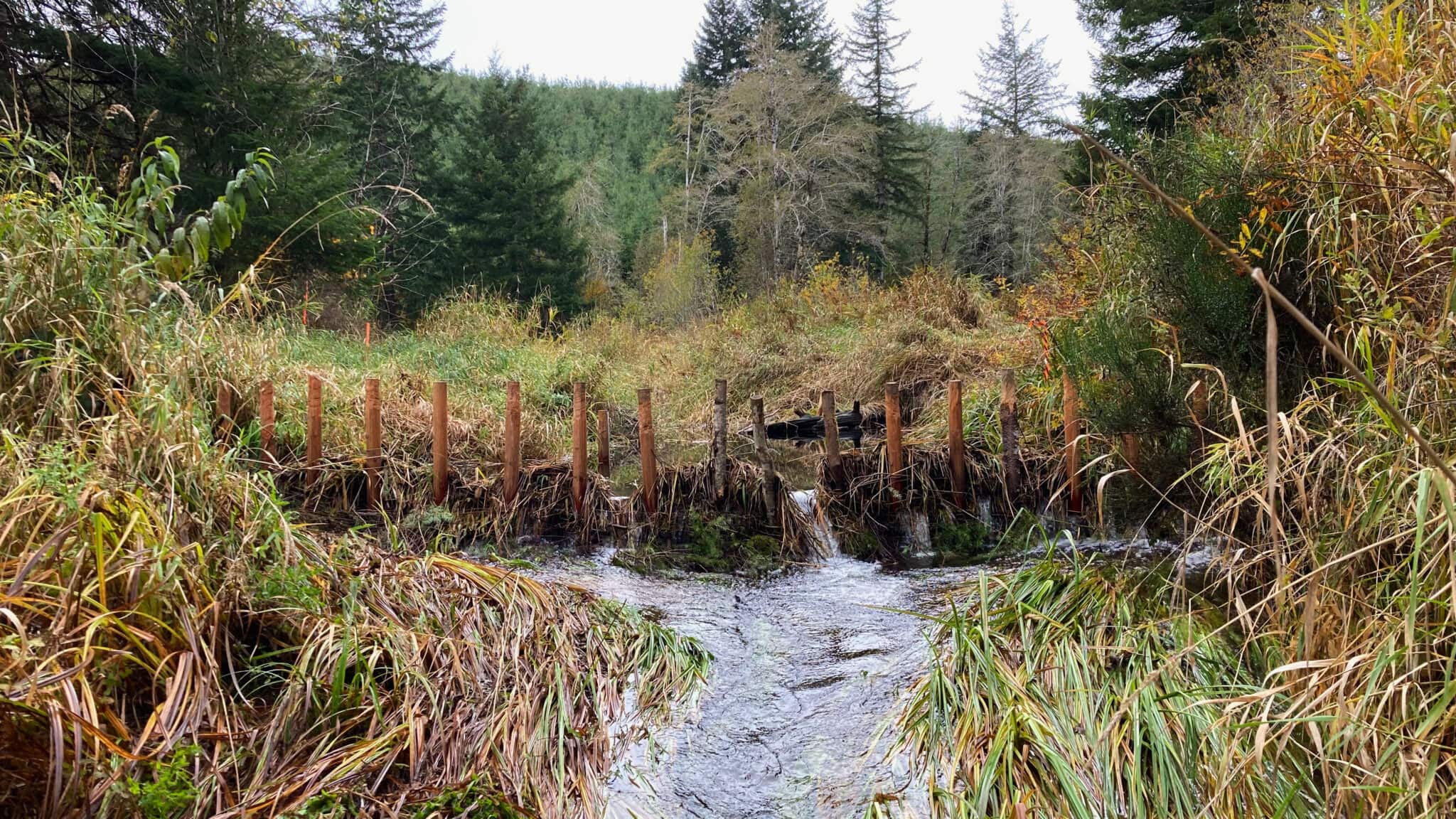

Beaver Dam Analogs (BDAs) are simple restoration techniques designed to mimic the form and function of natural beaver dams. Wetland filling and declines in beaver populations have reduced the number of slow water habitats important for natural flow regimes, salmon, amphibians, and waterfowl. Installation of BDAs is intended to increase the quality and quantity of these important habitats to benefit streamflow and buffer native fishes and other aquatic species from the impacts of climate change.
Working closely with Washington’s Department of Fish and Wildlife (WDFW) and Beavers Northwest, the project team developed a Beaver Intrinsic Potential model to identify sites within the Chehalis watershed, western Washington State, with the highest potential to sustain beaver dams and store surface water. Once sites with a high likelihood of success were identified, the team contacted land owners to gauge interest in BDAs. If the land owners expressed interest in having a BDA on their property, the site was field-inspected to confirm dam-suitability and identify potential infrastructure challenges and other constraints.
The BDA structures use untreated wood posts driven into the stream bed spanning the channel perpendicular to flow. Vegetation is woven between the posts to slow the flow of water. The structure will continue to collect more debris drifting downstream during higher flows, and may encourage maintenance from beavers in the vicinity.
To evaluate the effectiveness of the BDAs, each project reach was divided into thirds; the first was a control reach with no structures, the middle was the treatment reach where 5-12 BDAs were constructed, and the third was downstream of the BDAs and had no structures. The team evaluated water temperature, hydrological changes, physical changes and biological changes in each of the three reaches. Before and after the BDAs were constructed, water temperatures were collected continuously and other measurements were taken at intervals ranging from monthly to annually to fully evaluate how the BDAs affect the ecosystem. This project is ongoing.
Location | Start Date |
|---|---|
Chehalis Basin, western Washington State | 11/01/2020 |
Project Type | Completion Date |
|---|---|
Habitat Restoration |
Objectives:
Primary Habitats Impacted By Project: | Managing Agency/ Organization: |
|---|---|
Urban and Rural Riparian Stream Channels | Wild Fish Conservancy |
Project Contact: | Budget or Project Cost: |
|---|---|
Jamie Glasgow | $200,000 |
Funding Sources: | Partners: |
|---|---|
Project Effectiveness Program of the Aquatic Species Restoration Plan and the Chehalis Basin ASPR | Washington Department of Fish and Wildlife |
Join our mailing list to recieve important updates on our work, the latest wild fish news, & opportunities to take action to support wild fish.
This site is protected by reCAPTCHA and the Google Privacy Policy and Terms of Service apply.
Wild Fish Conservancy is recognized as a 501(c)3 non-profit by the IRS